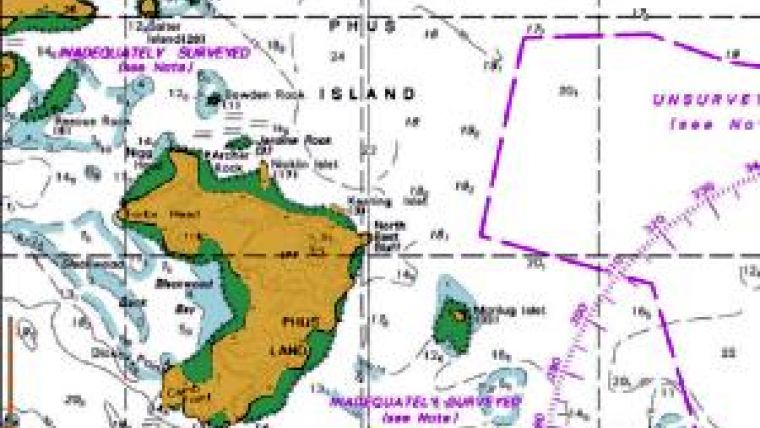The State of Nautical Charts Across the Globe
An examination of IHO Yearbooks shows that the numbers of surveying vessels operated by IHO Member States has declined steadily by 35% since 1979. It seems unlikely that this reduction has been compensated for by more efficient technology, such as Lidar, multi-beam sensors or through governments opting for commercial survey contracts. IHO Publication C-55 Status of Hydrographic Surveying and Nautical Charting Worldwide shows that progress in the amount of sea area surveyed in most States is slow or nonexistent. The conclusion must be that while the way that chart data can be presented is becoming ever more sophisticated, for example, by using ECDIS and ECS, progress in improving the underlying quality of the data contained in many of the world’s charts is not progressing at the same pace.
Meanwhile, requirements increase with ever bigger ships operating on more and more routes and visiting new ports. Charts, especially ENCs intended for use in ECDIS, ought to be based on new and accurate hydrographic data in order to best serve the increasing demands placed on mariners at sea. Yet there are still areas of the world where the existing charts cannot support navigation using satellite-based position fixing. Recently, in some island States in the South West Pacific, most of the existing larger scale charts and plans have been withdrawn because the underlying data is too old and inadequate to be reliable.
While the hydrographic offices of the IHO’s 80 Member States attempt to improve things, it is ironic that all 161 of the Contracting Governments to the SOLAS Convention have, under Chapter V Regulation 9, accepted responsibility to ensure that hydrographic surveying is carried out, as far as possible, adequate to the requirements of safe navigation. Yet of the 159 coastal States, relatively few have satisfactory arrangements in place to ensure that surveys are carried out. This is particularly the case for those States that are not member of the IHO.
Given its acknowledged role as the authoritative worldwide body concerning hydrography, IHO Member States strive to improve the collection, quality and availability of hydrographic data, to monitor and rectify possible deficiencies and shortcomings, and to co-operate with other international organisations and stakeholders as necessary. However, in straitened economic times, the few HOs that once maintained a global reach have withdrawn – and smaller States have traditionally always had few resources. The challenge for the IHO - and more especially, for all coastal States, is therefore to find new ways to make up and improve upon the current shortfall in capacity. To this end, the IHO will continue to act, in close co-operation with other stakeholders, especially the IMO, to improve global coverage, accuracy and availability of hydrographic data and identify new ways to assist States to meet their hydrographic obligations.
In April 2012, the 80 Member States of the IHO will gather for their 18th five-yearly conference. Among the topics to be discussed will be the state of the world’s hydrographic surveying capability and the reduction in hydrographic surveys to support nautical charting which will impact not only the provision of comprehensive and accurate nautical charts, but also on the availability of hydrographic information for other nation building activities, such as offshore resource management, maritime boundary delimitation and the development of strategies to mitigate the effects of natural disasters.

Value staying current with hydrography?
Stay on the map with our expertly curated newsletters.
We provide educational insights, industry updates, and inspiring stories from the world of hydrography to help you learn, grow, and navigate your field with confidence. Don't miss out - subscribe today and ensure you're always informed, educated, and inspired by the latest in hydrographic technology and research.
Choose your newsletter(s)
























